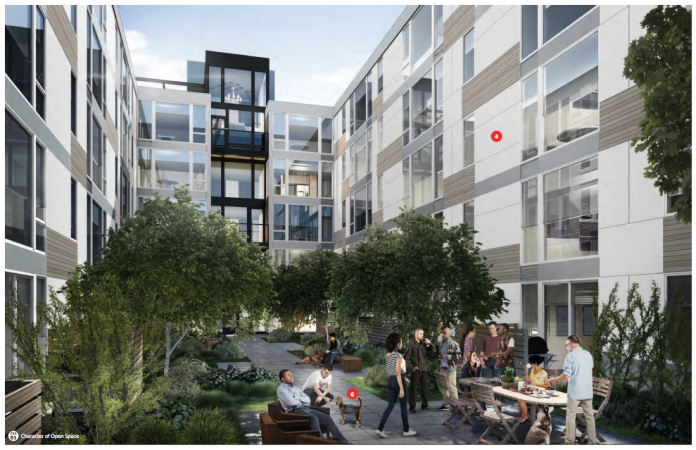The Seattle City Council met on Monday to vote on several ordinances, including three land use-related ordinances as part of their weekly legislative agenda. The first two dealt with contract rezones for mixed-use development proposals in the Central District and University District, and a third dealt with granting Swedish Medical Center the right to construct a new skybridge over Minor Avenue at the First Hill branch.
Part of the vote, however, was delayed until next week due to protesters associated with the Black Lives Matter movement derailing the meeting and turning its focus to racial equity. The protesters demanded, among other things, that the City block the controversial $210 million youth jail King County has planned in the Central District. Only the University District rezone passed in full while the Central District rezone was confirmed in part but the companion ordinance for the zoning map amendment and Property Use and Development Agreement was held up.
University District Rezone
Brooklyn 50, LLC requested a rezone of a 5,008-square foot site (5001 Brooklyn Ave NE) from Lowrise 3 (LR3) to Neighbohood Commercial 3 with a 65-foot height limit (NC3-65). The site is included in the neighborhood-wide rezone heading for Council approval later this year and is slated to eventually go to NC3-65. But the applicant decided to move ahead with a rezone and development application in 2015 to allow for a seven-story mixed-use building. The project wrapped up design review in February and has been awaiting final approvals, including the rezone.
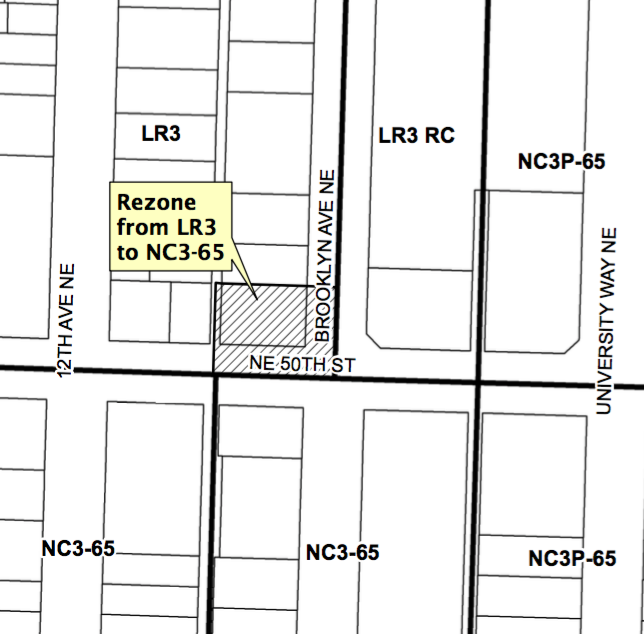
The site is located at the northwest corner of NE 50th St and Brooklyn Ave NE. The area is already fairly diverse with commercial, institutional, and residential uses. The University Heights Community Center stands prominently to the east while Safeway, Walgreens, and a low-slung commercial building are situated across NE 50th St. Meanwhile, the site is buffered by single-family and lowrise multi-family residential along the north and east of the site.
The developer plans to market the building largely for microhousing, which will include 60 small efficiency residential dwelling units. A further 1,191 square feet of ground floor will be targeted for neighborhood commercial space. Plans indicate that the retail space will be located at the southeast corner of the site for maximum exposure and accessibility for patrons; a majority of the space will front on NE 50th St. The only parking planned for the building is 47 bicycle parking spots that will be located on the ground floor interior of building
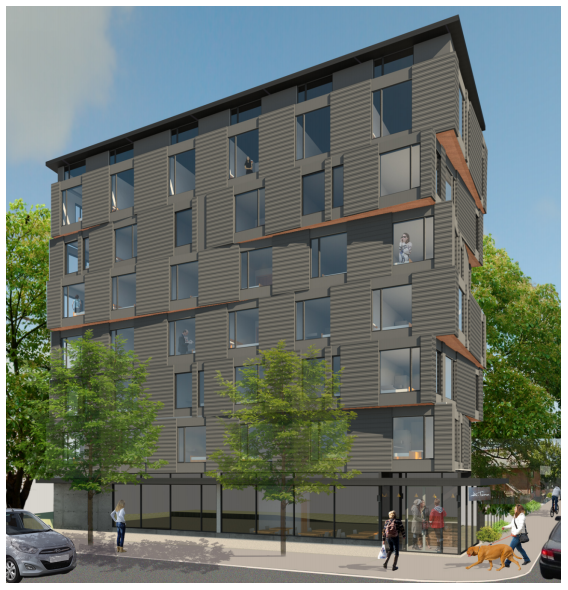
The design approach included some softening and privacy (blank wall) of the northern edge to better blend in with the adjacent single-family detached unit. An exceptional tree will be retained on the northeast corner of the site fronting Brooklyn Ave NE.
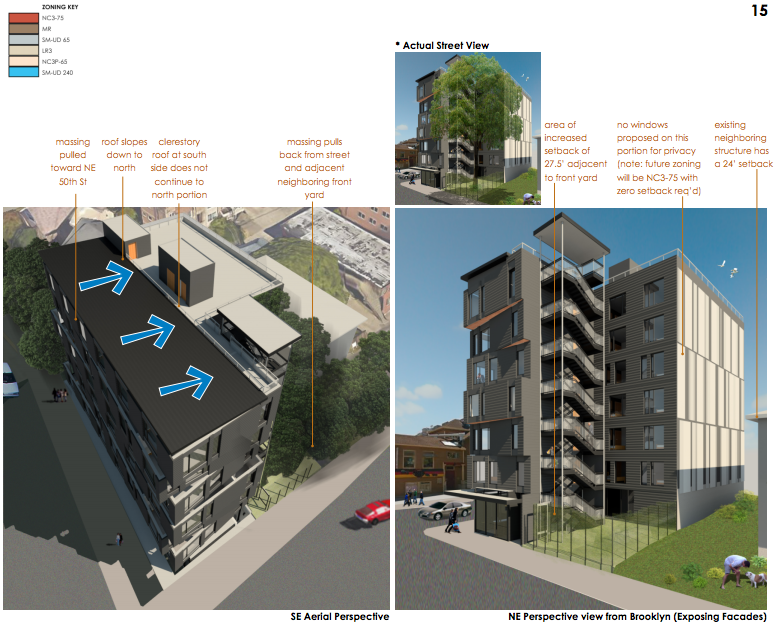
Taking advantage of the Multi-Family Tax Exemption program, the developer will designate 20% of the units as affordable. Four dwelling units will be made available to households earning 40% of the area median income (AMI) while another eight will be rented to households earning up to 60% of the AMI.
Capitol Hill Rezone
East Union 22, LLC requested a rezone for a 34,000-square foot site (2220 E Union St) in June 2015 to construct a five-story mixed use building. The developer intends to building up to 144 residential units within the structure and housing 20,207 square feet of commercial on the ground floor. The retail space will be located exclusively on the Pedestrian-designated frontages of the building, providing an enhanced and active pedestrian experience. While the site is already well served by transit on 23rd Ave E and E Union St, a further 148 parking stalls, secure bike storage room, bike repair room, and a bike washing room will be located below ground to support the needs of future residents and businesses. Access to the two entrances for the underground parking facilities are to be from 22nd Ave E.
The rezone proposal is a two-parter since the site is split zoned due to the Pedestrian designations on the E Union St and 23rd Ave E frontages and a portion of the frontage on 22nd Ave E not Pedestrian-designated. In sum, the rezone is from Neighborhood Commercial 2 with a 40-foot height limit (NC2-40) to Neighborhood Commercial 2 with a 65-foot height limit (NC2-65) and Neighborhood Commercial 2 with a Pedestrian designation and 40-foot height limit (NC2P-40) to Neighborhood Commercial 2 with a Pedestrian designation and 65-foot height limit (NC2P-65). The rezone is necessary because the proposal will utilize the full height permitted by NC2-65 and NC2P-65 zoning.
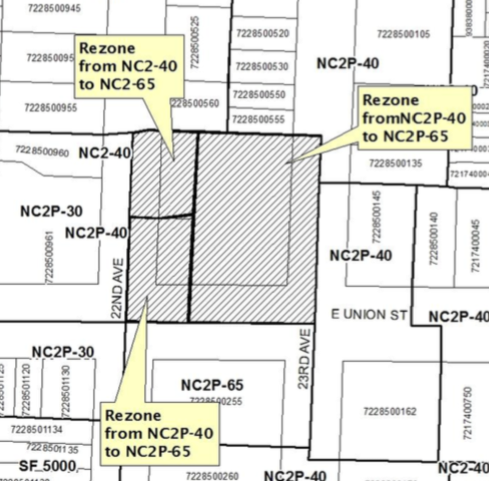
The design of 2220 E Union St is fairly modern. The architects proposed earthy tones and materials as is reflected in the light brown of the wood panels and charcoal cement panels and coping. A strong emphasis has been placed on light and transparency. The building will have many large windows and some units will have interior balconies. To reduce the feel of bulk, minor recesses in tandem with a modified color palette will be deployed on the E Union St and 22nd Ave E frontages.
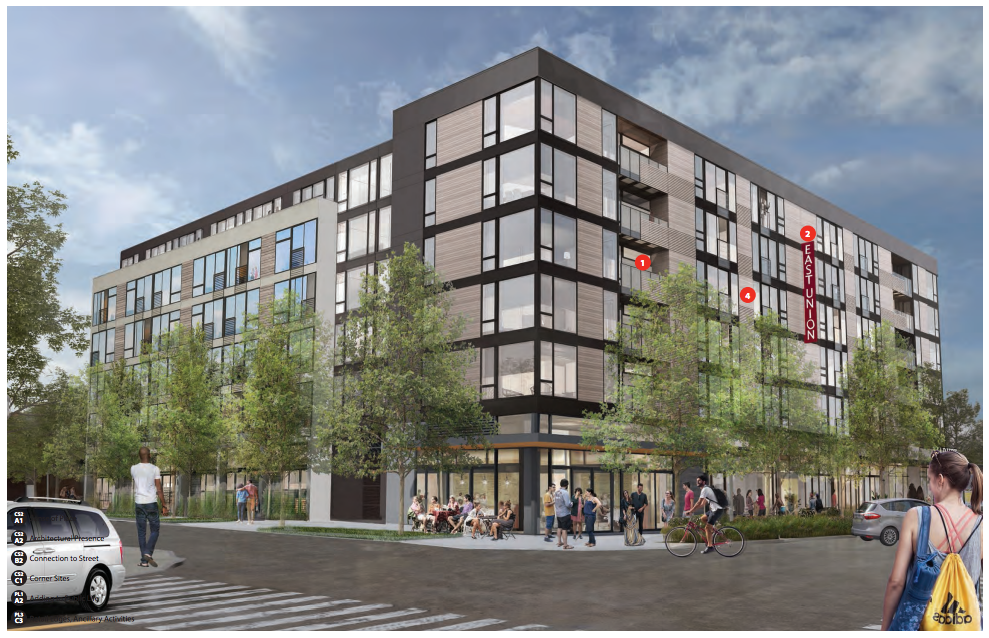
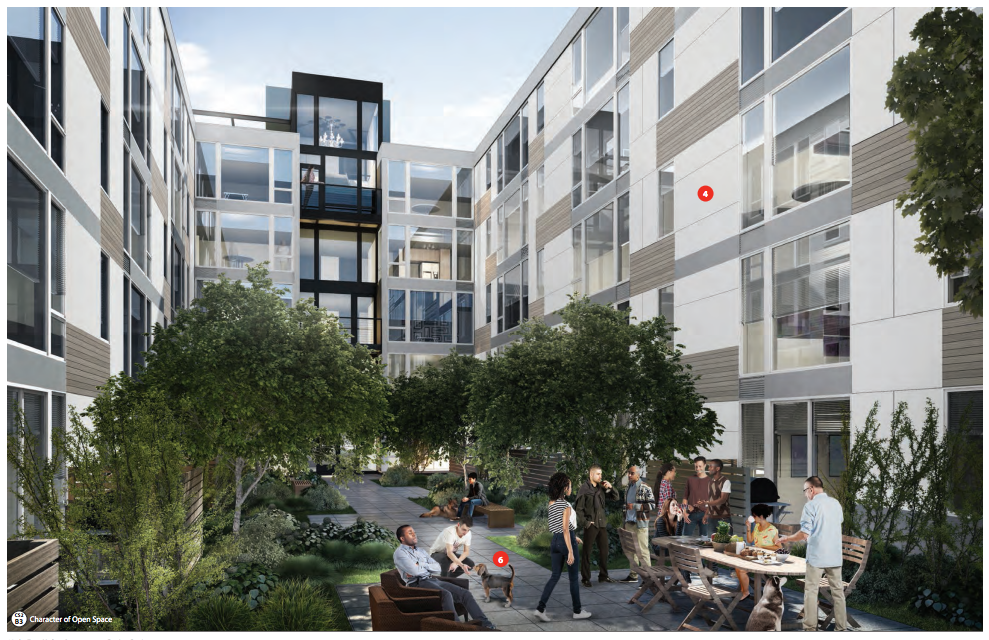
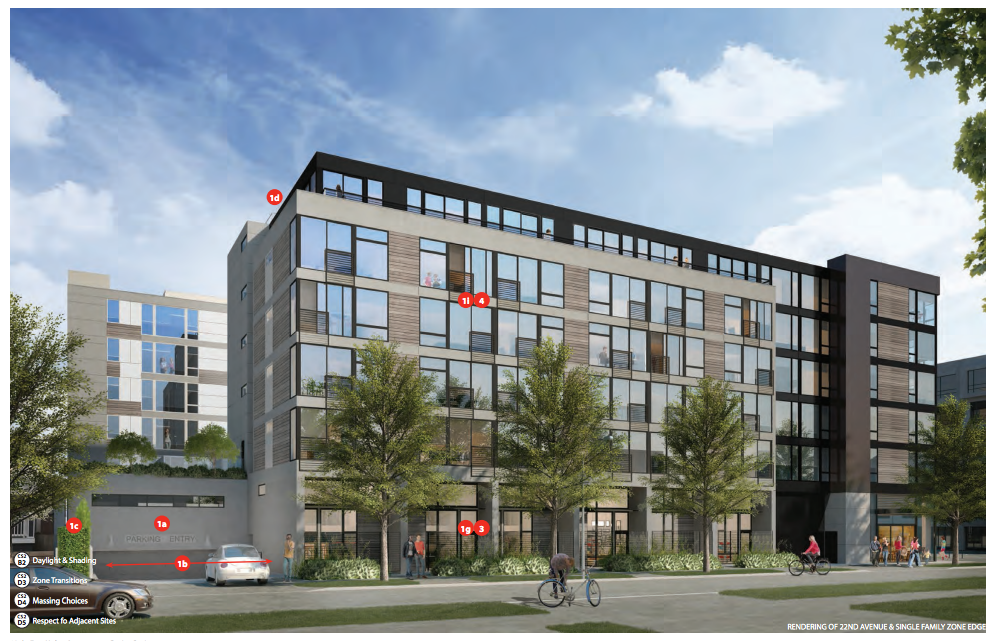
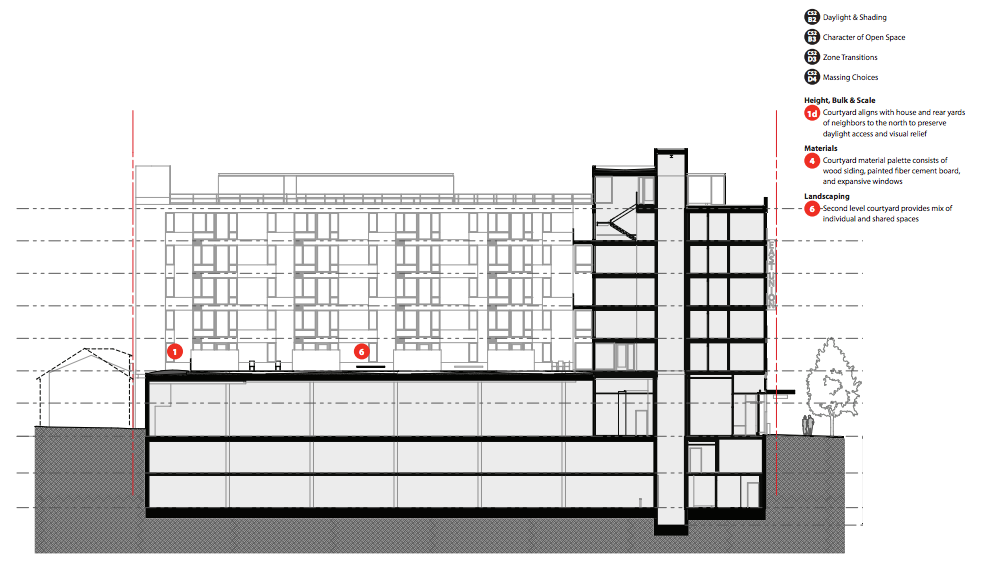
The rezone would be one of the first subject to the Mandatory Housing Affordability-Commercial (MHA-C) requirements of the Mayor’s Housing Affordability and Livability Agenda (HALA). While the rezone land use application was submitted to the Seattle Department of Construction and Inspections in June 2015 and deemed complete around that time, the applicant voluntarily chose to participate in the MHA-C requirements, which were passed in November 2015 and became effective in early December. The implementation language of the MHA-C ordinance expressly covered contract rezones (SMC 23.58B.010(A)(1)):
The provisions of this Chapter 23.58B apply in areas for which the provisions of the zone specifically refer to this Chapter 23.58B, or through the terms of a contract rezone in accordance with Section 23.34.004.
In sum, the language gives the City Council authority to condition a contract rezone dependent upon the inclusion of MHA-C. The rezone received recommendation from the SDCI and the City Hearing Examiner this summer, before the MHA-R passed the dais in August.
The instant development proposal would involve approximately 20,207 of commercial development. The MHA-C requirements exempt the first 4,000 square feet of street-level retail uses and the entirety of street-level uses along Pedestrian-designated streets like 23rd Ave E and E Union St. In this case, that comes out to another 7,596 square feet of exempt commercial space. The total sum of the exemptions come to 11,596 square feet for the development proposal, meaning that only 8,611 square fee of chargeable commercial floor area is subject to the MHA-C requirements.
Applicants are given two options to contribute affordable housing when subject to MHA-C: a fee in-lieu (payment option) or building affordable housing (performance option). With the non-exempt chargeable commercial space coming it at 8,611 square feet, the performance option would only require development of 430 square feet of affordable housing whereas the payment option would require a $60,277 payment to fund affordable housing. However, in this case, the default is for the applicant to elect the payment option since fewer than three dwelling units would be incorporated as part of on-site or off-site performance.
Swedish Medical Center Skybridge
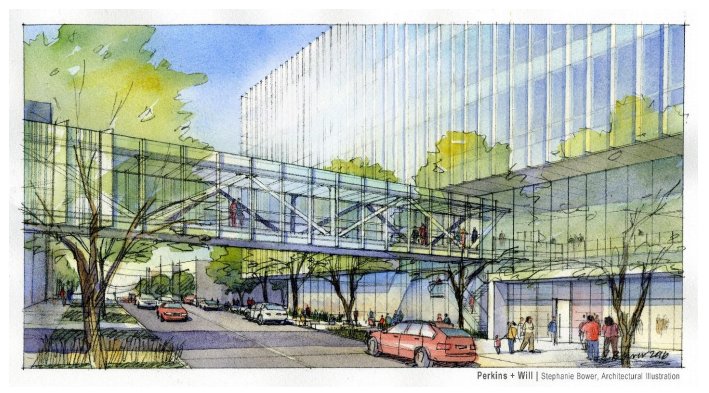
Swedish Medical Center recently went ahead with an alley vacation petition of Block 95 in August at its First Hill campus. The City Council approved the request, which would pave the way for a future 17-story tower that would support loading and food services, laboratories and medical offices, and other support functions. Now the healthcare company is planning to construct a new skybridge over Minor Avenue. The skybridge would connect the future Block 95 tower to the Swedish’s Northwest Tower complex east of Minor Avenue and south of Marion Street. As the map below suggests, there is already a web skybridges knitting the campus together.
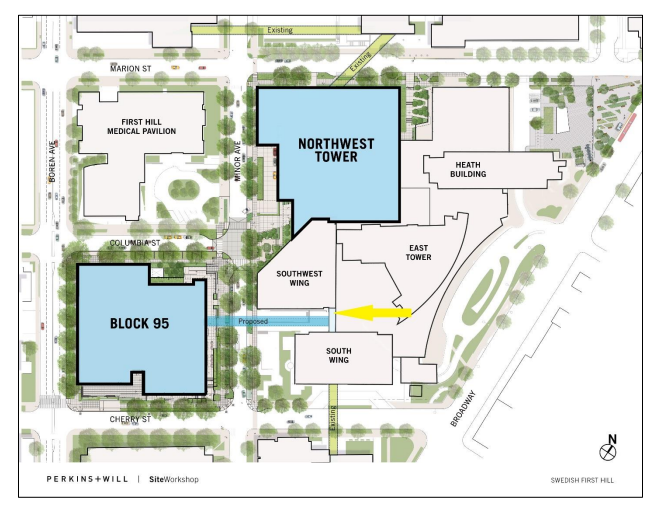
As the sketch suggests, the skybridge will be a fairly transparent and modern design to match the adjoining buildings like the future Block 95 tower.
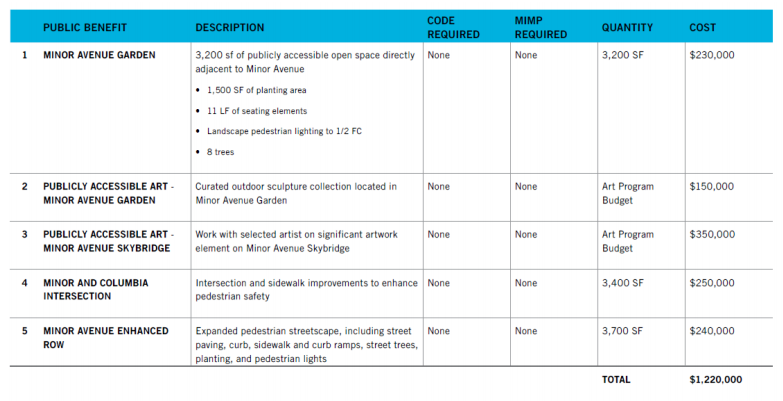
To support the proposal, Swedish will construct a variety of public benefits to the tune of $1.22 million. These include large public garden, two major art installations, an intersection improvement, and streetscape improvements on Minor Avenue.
- The intersection improvements will be focused at Minor Avenue and Columbia Street. The intersection is T-shaped with Columbia Street terminating at Minor Avenue. The improvement plan is to create a raised intersection to calm traffic and enhance mobility for people walking across all three sides.
- The garden on Minor Avenue will be located just east of the Minor Avenue/Columbia Street intersection. The 3,200-square foot space is designed to be publicly accessible with seating, landscaping, trees, lighting, and a major sculpture.
- The skybridge itself will need to be designed with some sort of artwork.
- The streetscape improvements will be focused on the east side of Minor Avenue and stretching the full block between Columbia Street and Cherry Street.
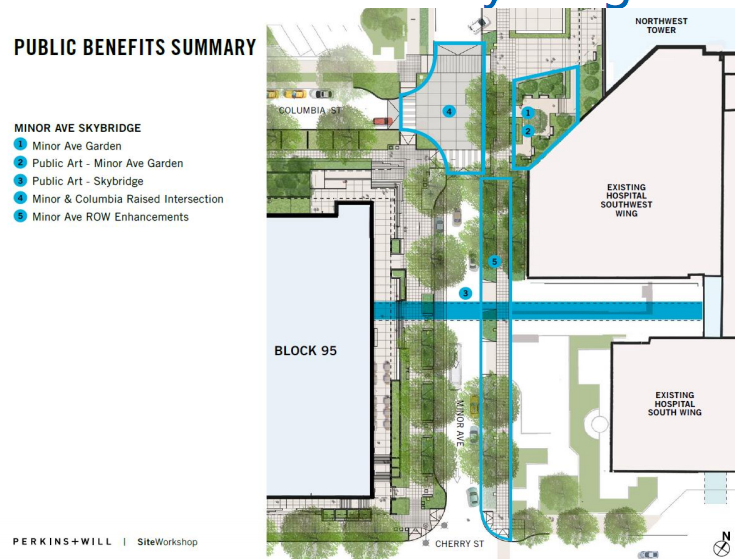
Swedish Medical Center would be subject to an annual fee to use the right-of-way air rights over Minor Avenue. The first year’s fee is estimated at $13,474.93 and to be adjusted annually thereafter with inflation. The initial period for the street use permit would be 10 years and could be renewed twice, once every 10 years.
Stephen is a professional urban planner in Puget Sound with a passion for sustainable, livable, and diverse cities. He is especially interested in how policies, regulations, and programs can promote positive outcomes for communities. With stints in great cities like Bellingham and Cork, Stephen currently lives in Seattle. He primarily covers land use and transportation issues and has been with The Urbanist since 2014.

